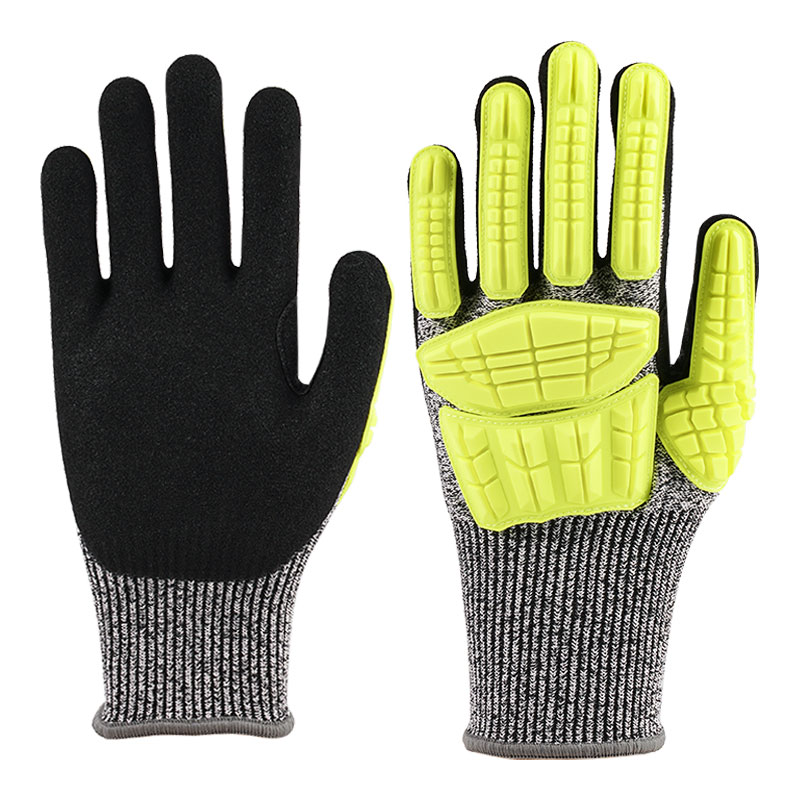13 Guage HPPE Anti-Collision Attenuates Impact Gloves are specialized hand protection gear designed to provide protection against impacts and collisions while offering comfort and dexterity; These gloves often incorporate cushioning materials, such as thermoplastic rubber (TPR) or foam padding, on the back of the hand and fingers; This padding helps absorb and dissipate the force of impacts, reducing the risk of hand injuries in industries like construction, automotive, and manufacturing.
Despite their robust protective features, 13 Guage HPPE Anti-Collision Attenuates Impact Gloves are designed for comfort and dexterity; They typically have an ergonomic design and a flexible fit, allowing workers to perform intricate tasks without compromising safety or comfort.
The 13 Guage HPPE anti-collision attenuates impact gloves Crafted from high-performance HPPE material, these gloves offer unparalleled cut resistance, achieving a remarkable level 5 on the anti-cutting scale.
To enhance their protective capabilities, these gloves feature a Nitrile Frosted coating, providing grip and dexterity; On the back of the hand, you'll find TPR for added protection against impacts; Available in a range of sizes from S to 2XL, and a stylish Heather Gray color, these gloves are suitable for various hand sizes and preferences.
One standout feature of these gloves is the TPR anti-collision strip design; This innovative addition provides a crucial layer of protection, effectively reducing the impact on the back of your hand from external forces; These gloves are recommended for industries where safety is paramount, including the mining industry, rescue industry, and high-risk work environments.

 English
English 中文简体
中文简体








